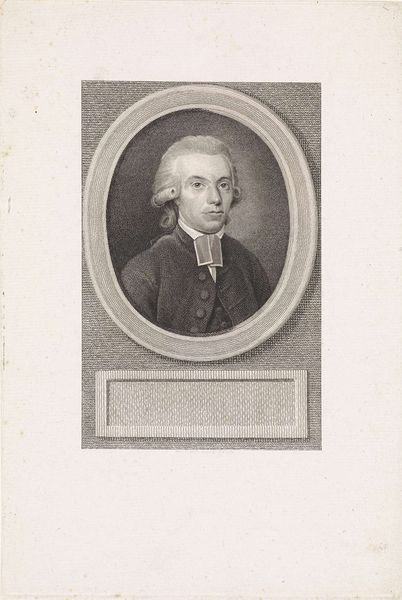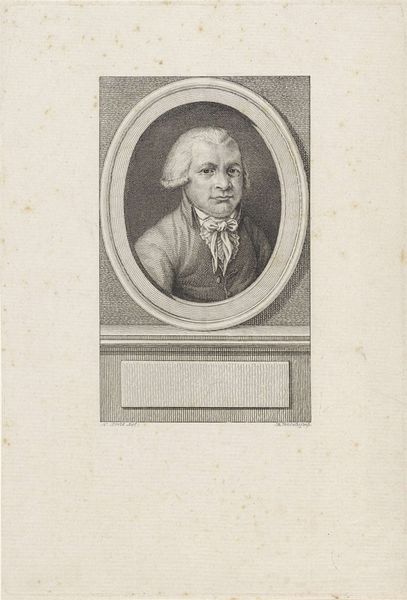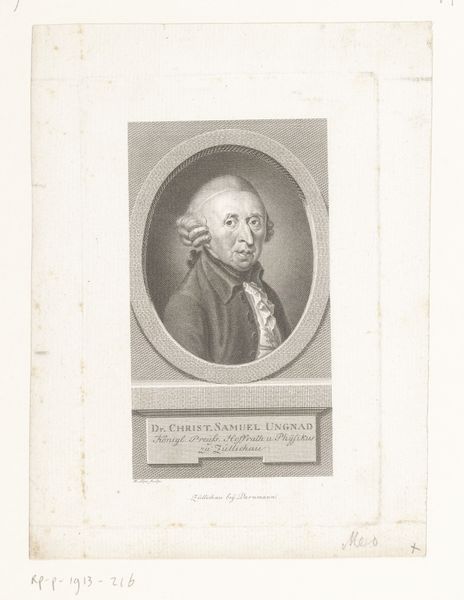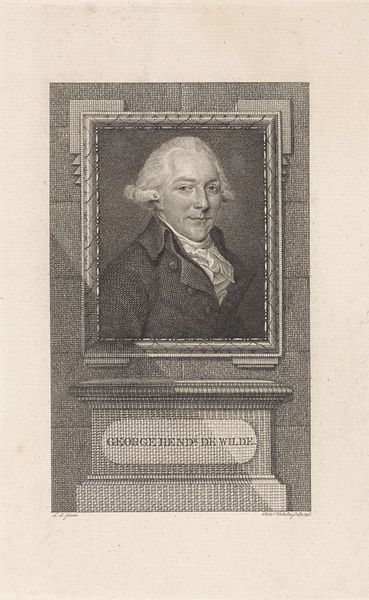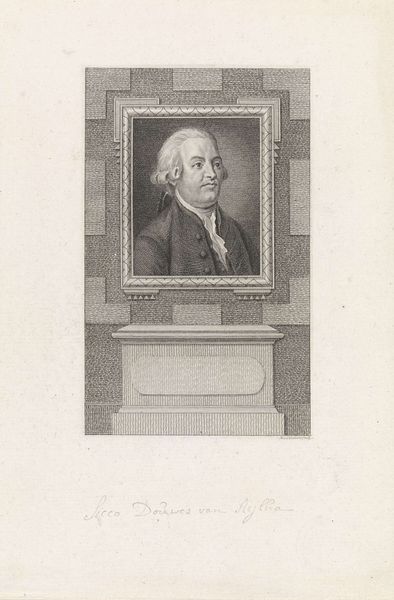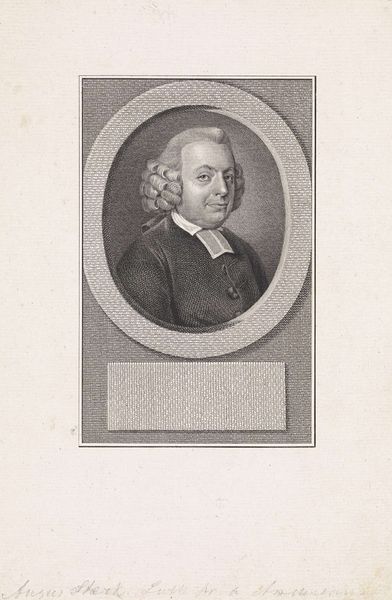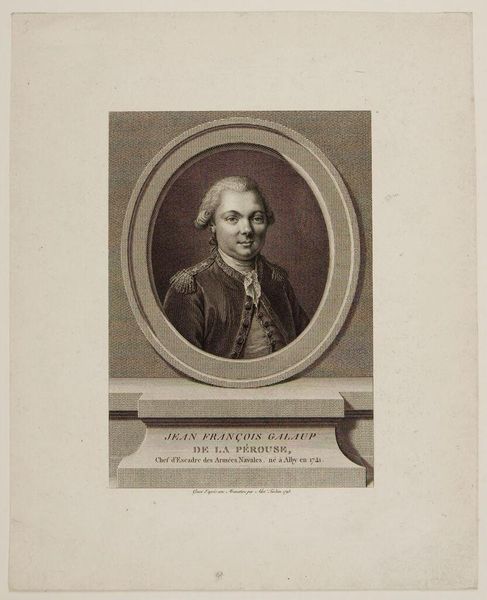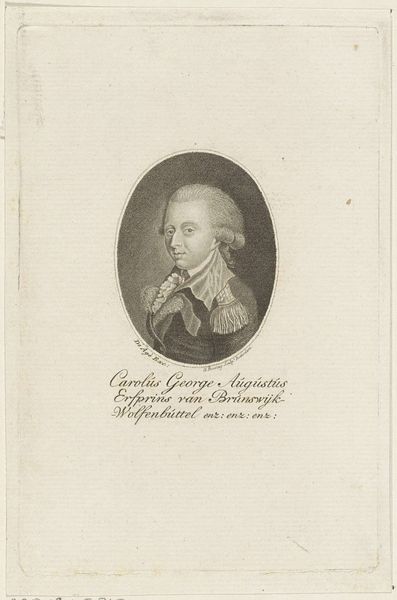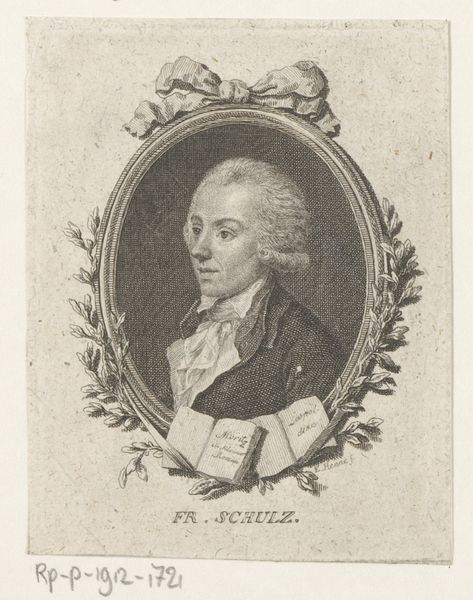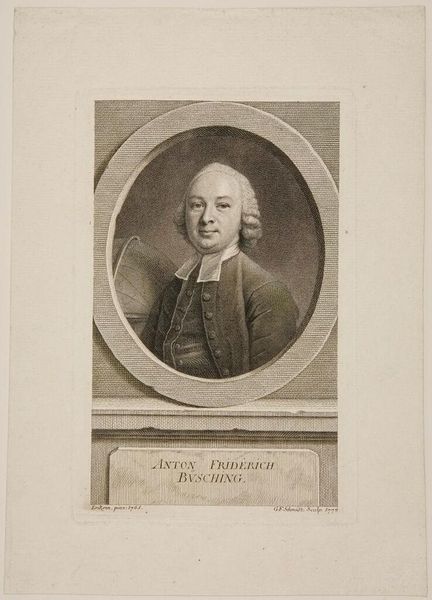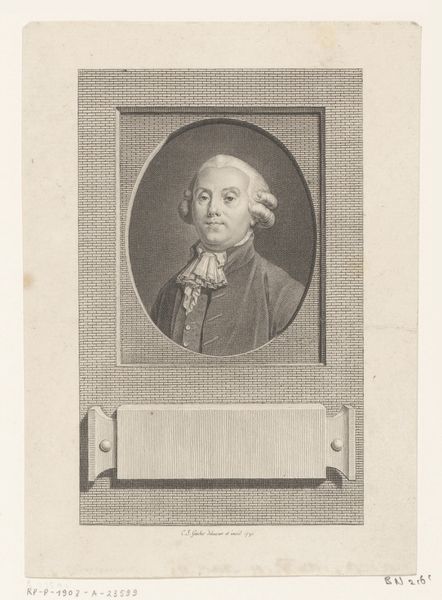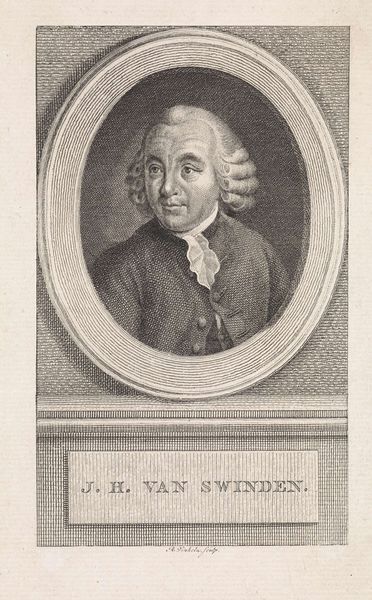
print, etching, engraving
#
portrait
#
neoclacissism
# print
#
etching
#
engraving
Dimensions: height 251 mm, width 168 mm
Copyright: Rijks Museum: Open Domain
Editor: This is a print entitled "Portret van Jean Henri van Swinden," created between 1785 and 1816 by Reinier Vinkeles. It combines etching and engraving techniques. The oval frame containing the subject gives it a neoclassical feel. What draws your attention when you look at this work? Curator: The balanced composition, isn't it? Observe how the artist employs the oval frame not just as a border but as a structural element. Note the use of clean, precise lines achieved through engraving and etching—the formal vocabulary speaks to Neoclassicism. Consider the interplay between positive and negative space. Do you notice how the blank inscription rectangle anchors the composition? Editor: Yes, it does feel very balanced and contained. But isn't there a slight tension between the very formal structure and the slightly softer, almost sentimental expression of the subject? Curator: Indeed! That's a crucial observation. Semiotically, this contrast could be seen as indicative of its time, reflecting emerging romantic sensibilities seeking expression through accepted formal systems. Also, notice the layering created with various medium usage: printmaking (engraving and etching). Does the density of lines across mediums allow us to think of depth? Editor: I hadn't thought about the balance between romanticism and classicism in it, but now that you mention it, that push and pull is really visible. It makes the image far more dynamic than I initially perceived. Curator: Precisely. Attending to the formal relations and how meaning emerges can yield deeper interpretive potential. It shifts our understanding beyond a simple portrait to seeing it as an interesting piece through its construction, its elements. Editor: That's really helpful! I appreciate how you broke down the composition and materiality to understand it more fully. Curator: Likewise; it's rewarding to reconsider our reading of familiar forms.
Comments
No comments
Be the first to comment and join the conversation on the ultimate creative platform.


